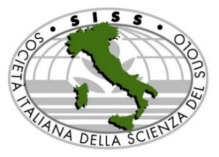Prediction of PM2.5 via precursor method using meteorological parameters
DOI:
https://doi.org/10.6092/issn.2281-4485/21009Keywords:
PM2.5 , Meteorological Parameters, Artificial Neural Network, Air Quality Index, Lahore, KarachiAbstract
Air pollution is one of the major environmental concerns faced by many countries including Pakistan. Being the major component of the pollution, particulate matters 2.5µm diameter (PM2.5), are known to highly raise health risks to people in the country. The present study investigates the modelling and prediction of particulate matter 2.5µm using its precursor values and meteorological parameters; temperature, humidity levels, and wind speeds in Lahore and Karachi. The air quality of Lahore repeatedly plummets to hazardous levels in the winter season which is a severe threat to the public health and environment. An Artificial Neural Network (ANN) architecture was designed to predict PM2.5 by employing meteorological parameters (temperature, relative humidity & wind speed) and precursor values of PM2.5. The model consists of an input layer with four input variables, a hidden layer with 10 neurons, and an output layer consisting of PM2.5. The model was used for both the cities of Lahore and Karachi. The Root Mean Square Error (RMSE) value for Karachi was less than 18 and for Lahore, it was 39. The prediction of PM2.5 via ANN was good for Lahore and Karachi. However, the results of the modeling are better for Karachi. The accuracy of results were further verified by Mean Absolute Percentage Error (MAPE), Mean Absolute Bias Error (MABE), and Chi square statistics (Chi).
References
BASHEER S., RASHID H., NASIR A., NAWAZ R.A. (2019) Spatial and temporal variability analysis of PM 2. 5 concentration in Lahore city. Environmental Contami-nants Reviews (ECR), 2(1) : 6-10. https://doi.org/10.1016/j.atmosres.2019.104715
BROOK R.D., RAJAGOPALAN S., POPE III C.A., BROOK J.R., BHATNAGAR A., DIEZ-ROUX A.V., HOLGUIN F., HONG Y., LUEPKER R.V., MITTLE-MAN M.A., PETERS A. (2010) Particulate matter air pollution and cardiovascular disease: an update to the scientific statement from the American Heart Associa-tion. Circulation, 121(21) :.2331-2378. https://doi.org/10.1161/CIR.0b013e3181dbece1
GARDNER M.W., DORLING S.R. (1998) Artificial neural networks (the multilayer perceptron)—a review of applications in the atmospheric sciences. Atmospheric Environment, 32(14-15): 2627-2636. https://doi.org/10.1016/S1352-2310(97)00447-0
HARRISON R.M., LAXEN D.P.H., MOORCROFT S. (2012) Interpretation of particulate elemental and organic carbon concentrations at rural, urban and kerbside sites. Atmospheric Environment, 55: 565-575. https://doi.org/10.1016/j.atmosenv.2005.08.017
JACOB D.J., WINNER D.A. (2009) Effect of climate change on air quality. Atmospheric Environment, 43(1):51-63. https://doi.org/10.1016/j.atmosenv.2008.09.051
KUKKONEN J., PARTANEN L., KARPPINEN A., RUUSKANEN J., JUNNINEN H., KOLEHMAINEN M., NISKA H., DORLING S., CHATTERTON T., FOXALL R., CAWLEY G. (2003) Extensive evaluation of neural network models for the prediction of NO2 and PM10 concentrations, compared with a deterministic modelling system and measurements in central Helsinki. Atmospheric Environment, 37(32):4539-4550. https://doi.org/10.1016/S1352-2310(03)00583-1
KUMAR A., GOYAL P. (2011) Forecasting of daily air quality index in Delhi. Science of the Total Environ-ment, 409(24) : 5517-5523. https://doi.org/10.1016/j.scitotenv.2011.08.069
LADEN F., SCHWARTZ J., SPEIZER F.E., DOCKERY D.W. (2006) Reduction in fine particulate air pollution and mortality: Extended analysis of the Harvard Six Cities Study. American Journal of Respiratory and Critical Care Medicine, 173(6):667-672. https://doi.org/10.1164/rccm.200503-443OC
LINDEN B. (2019) Air pollution: Outdoor air quality and health. British Journal of Cardiac Nursing, 14(6):1-4. https://doi.org/10.12968/bjca.2019.0044
LIU H., CAO C., HUANG J., CHEN Z., CHEN G., LAI Y. (2020) Progress on particulate matter filtration techno-logy: basic concepts, advanced materials, and performan- ces. Nanoscale, 12(2):437-453. https://doi.org/10.1039/C9NR08851B
MASOOD A., AHMAD K. (2023) Prediction of PM2.5 concentrations using soft computing techniques for the megacity Delhi, India. Stochastic Environmental Research and Risk Assessment, 37(2):625-638. https://doi.org/10.1007/s00477-022-02291-2
POPE III C.A., EZZATI M., DOCKERY D.W (2009) Fine-particulate air pollution and life expectancy in the Uni-ted States. New England Journal of Medicine, 360(4):376-386.https://www.nejm.org/doi/full/10.1056/NEJMsa0805646
SHAHID I., KISTLER M., MUKHTAR A., GHAURI B.M., RAMIREZ-SANTA CRUZ C., BAUER H., PUXBAUM H. (2016) Chemical characterization and mass closure of PM10 and PM2.5 at an urban site in Karachi–Pakistan. Atmospheric environment, 128:114-123. https://doi.org/10.1016/j.atmosenv.2015.12.005
TAI A.P., MICKLEY L.J., JACOB D.J. (2010) Correla-tions between fine particulate matter (PM2.5) and meteorological variables in the United States: Implications for the sensitivity of PM2.5 to climate change. Atmospheric environment, 44(32) : pp.3976-3984.https://doi.org/10.1016/j.atmosenv.2010.06.060
WANG X., SUN W. (2019) Meteorological parameters and gaseous pollutant concentrations as predictors of daily continuous PM2.5 concentrations using deep neural network in Beijing–Tianjin–Hebei, China. Atmospheric Environment, 211:128-137. https://doi.org/10.1016/j.atmosenv.2019.05.004
WORLD HEALTH ORGANIZATION (WHO) (2006) Air Quality Guidelines: Global Update 2005. particulate matter, ozone, nitrogen dioxide, and sulfur dioxide. World Health Organization. https://books.google.com.sg/books?hl=en&lr=&id=7VbxUdlJE8wC&oi=fnd&pg=PR9&dq=WORLD+HEALTH+ORGANIZATION+(WHO)+(2006)+Air+Quality+Guidelines:+Global+Update+2005.+Available+at:+https://www.who.int/airpollution/guidelines/en/+(Accessed:+2024).&ots=w445vPP8s7&sig=iuNgnRCvtDKnqROyq91cA883kBs&redir_esc=y#v=onepage&q&f=false
YANG Q., YUAN Q., LI T., SHEN H., ZHANG L. (2017) The relationships between PM2.5 and meteorological factors in China: seasonal and regional variations. International journal of Environmental Research and Public Health, 14(12):1510. https://doi.org/10.3390/ijerph14121510
ZHAO L., LIANG H.R., CHEN F.Y., CHEN Z., GUAN W.J., LI J.H., (2017) Association between air pollution and cardiovascular mortality in China: a systematic review and meta-analysis. Oncotarget, 8(39) : 66438. https://doi.org/10.18632/oncotarget.20090
Downloads
Published
How to Cite
Issue
Section
License
Copyright (c) 2025 Naeem Sadiq, Zaheer Uddin

This work is licensed under a Creative Commons Attribution 4.0 International License.









